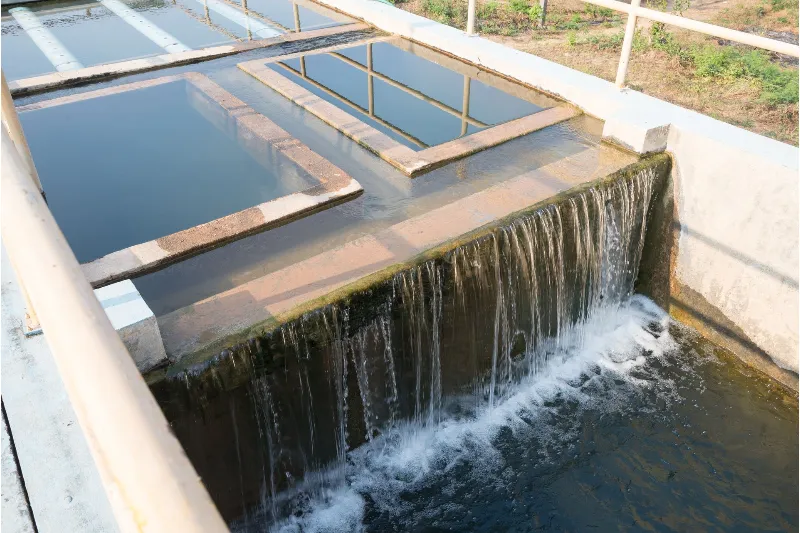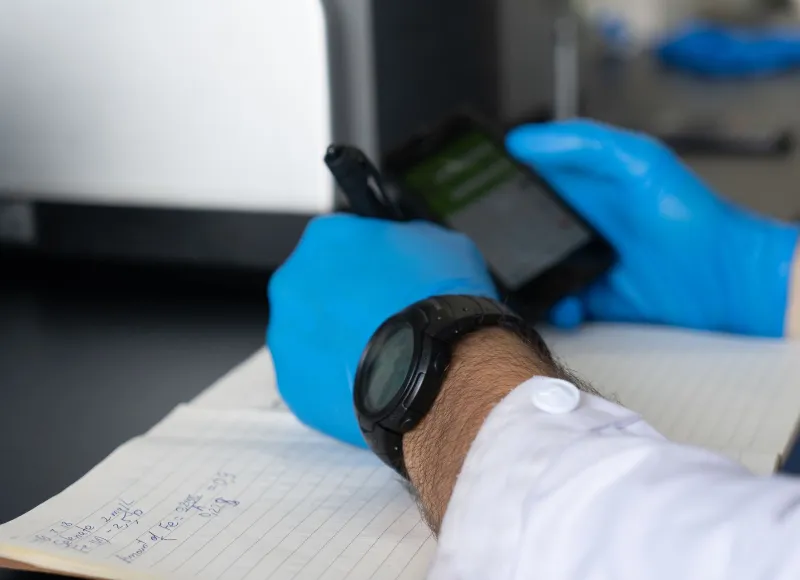Activated Carbon
Granular & Powdered Forms- High internal surface area
- Rapid diffusion kinetics
- Greater loading capacity
- Customisable particle sizing
- Manufactured by an ISO9001 accredited Quality system

Are you experiencing regular backwash, or has the throughput from your plant decreased? If so, it’s time to consider testing your filter media. Sampling your Australian Filter Coal or Granular Activated Carbon filter is one of the best methods to assess the situation and determine the necessary steps for resolution.
At James Cumming and Sons, we are a leading filter media manufacturer,and we understand the intricacies of optimising filter performance.
Core sampling from a direct filtration bed is essential for assessing filter media condition and performance, as well as detecting stratification, channelling, or degradation that can impact filtration efficiency. Here is our guide to conducting accurate core sampling.
Before starting the sampling process, ensure all necessary equipment is readily available. You will require:
Choose a representative location within the filter bed for sampling. Avoid areas directly near the influent or effluent, as they may not accurately represent the entire bed. It’s recommended to take multiple cores from various bed areas over time to ensure consistency and uniformity.
Carefully insert the core sampler vertically into the media until it reaches the support gravel layer at the bottom of the filter. Ensure the sampler goes in straight to minimise disturbance to the media layers.
Remove the core sampler from the filter media with care. The goal is to preserve the integrity of the media layers within the core for accurate assessment. Ensure the core remains intact during extraction.
After extracting the core, place it on a clean tray or surface. Visually inspect the sample from top to bottom, checking for:

Record detailed notes and capture photos of the core sample for documentation purposes. Note the depth, appearance and any anomalies present within the sample. This information is crucial for comparison with future samples and monitoring the overall health of the filter bed.
After analysis, carefully return the media to the filter bed in its original order and compaction. Pay close attention to distributing the media evenly to prevent creating pathways for channelling.
Schedule core sampling regularly to monitor the condition of the Australian Filter Coal or the Granular Activated Carbon filter media over time. Consistent monitoring assists in predicting maintenance needs and guarantees the efficient operation of the filtration system.
The decision to maintain the current filtration profile or upgrade depends on correct equipment usage and accurate data interpretation. While we’ve outlined steps for taking samples yourself, we understand it can be complex. Feel free to reach out to us for guidance or assistance. If you need clarification about the filter media’s condition, you have a couple of options: take photos and send them to a member of our team or send an actual sample. From there, we can arrange testing and analysis of the filter media to assess whether there are any obvious issues we can visually identify ex-situ, and perform sieve analysis to determine whether the media is still within the original sizing specification. If you are experiencing issues in backwashing or over fluidising the bed, it could be that the media has lost shape or particle size to which it was originally manufactured for.
Regular evaluation and maintenance prolong filter media lifespan and optimise filter bed performance for safe, clean water. Additionally, conducting sieve test analysis and physical inspections comparing the media’s current state to its initial installation can reveal signs of deterioration, such as loss of shape or visible contamination, indicating potential issues.
We are happy to assist and do one free sieve analysis to assess whether the media meets its original specifications or has degraded in size. If the media size decreases or falls out of specification, adjusting plant operations or replacing the media are the main options moving forward. Our experienced team can guide you through the process and explain the benefits of replacing or upgrading your filter media configuration.
James Cumming & Sons has over 115 years of expertise in pioneering the use of Australian coal and Carbon for industry. If you have any questions, need assistance or require more detailed resources on filter media maintenance and optimisation, feel free to reach out to our customer service team today.
for your Filter Coal, Activated Carbon and Carbon additive needs











James Cumming & Sons
319 Parramatta Road,
Auburn NSW 2144 Australia

© Copyright 2025 James Cummings & Sons Pty Ltd. Website by Brilliant Digital
The C&S Brand™ logo are trademarks of James Cumming & Sons Pty Ltd.
ABN 98 000 453 378